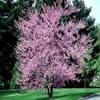Life Span
Perennial
Annual and Perennial
Type
Flowering Plants, Grass, Shrubs
Bulb or Corm or Tuber
Origin
Central America, North America
Latin America and the Caribbean, Central America, Micronesia
Types
Not Available
Hannah Yams, Japanese Sweet Potatoes
Number of Varieties
Not Available
Habitat
Temperate Regions, tropical environments
Cold Regions, Tropical regions
USDA Hardiness Zone
7-10
11-12
AHS Heat Zone
Not Available
12-1
Sunset Zone
Not Available
21,22
Habit
Upright/Erect
Vining/Climbing
Minimum Width
Not Available
Flower Color
Pink, Red, White, Yellow
Not Available
Flower Color Modifier
Bicolor
Bicolor
Fruit Color
Black, Green
Not Available
Leaf Color in Spring
Green, Dark Green
Green, Purple, Light Green, Chartreuse, Bronze
Leaf Color in Summer
Dark Green
Light Green
Leaf Color in Fall
Yellow green
Several shades of Green
Leaf Color in Winter
Dark Green
Light Green
Leaf Shape
Egg-shaped
Heart-shaped
Plant Season
Fall, Late Summer, Mid Summer
Spring, Summer, Fall, Winter
Sunlight
Full Sun
Full Sun, Partial Sun
Growth Rate
Fast
Very Fast
Type of Soil
Loam, Sand
Clay, Loam, Sand
The pH of Soil
Neutral, Slightly Acidic, Slightly Alkaline
Acidic, Neutral, Alkaline
Soil Drainage
Well drained
Well drained
Bloom Time
Early Fall, Late Summer, Mid Summer
Late Fall, Early Winter, Winter
Tolerances
Drought
Drought
Where to Plant?
Container, Ground, Pot
Ground, Pot
How to Plant?
Seedlings
Stem Cutting, Tuber propagation
Plant Maintenance
Low
Medium
Watering Requirements
Do not water excessively
Average Water Needs, Needs a lot of water initially
In Summer
Lots of watering
Lots of watering
In Spring
Moderate
Moderate
In Winter
Average Water
Average Water
Soil pH
Neutral, Slightly Acidic, Slightly Alkaline
Acidic, Neutral, Alkaline
Soil Type
Loam, Sand
Clay, Loam, Sand
Soil Drainage Capacity
Well drained
Well drained
Sun Exposure
Full Sun
Full Sun, Partial Sun
Pruning
Cut back old stems to the ground
Remove damaged leaves, Remove dead branches, Remove dead leaves
Fertilizers
as it is a flowering plant, use high phosphorous content fertilizer
All-Purpose Liquid Fertilizer
Pests and Diseases
Aphids, Slugs
Aphids, Beetles, Leafminers, Red blotch
Plant Tolerance
Drought
Drought
Flower Petal Number
Single
Single
Foliage Texture
Coarse
Coarse
Foliage Sheen
Matte
Matte
Attracts
Bees, Butterflies
Aphids, Beetles, Mites, white worms
Allergy
Not Available
Abdominal pain, Skin rash, Swelling, Vomiting
Aesthetic Uses
Showy Purposes, small hedge
Not Used For Aesthetic Purpose
Beauty Benefits
Making cosmetics
Not Available
Environmental Uses
Not Available
Air purification
Medicinal Uses
anti-inflammatory, Aphrodisiac, Diuretic, Purgative, Vulnerary
Potassium, ß-carotene, Vitamin C
Part of Plant Used
Flowers, Leaves
Leaves, Root, Shoots
Other Uses
Edible dye
Used As Food, Used for its medicinal properties
Used As Indoor Plant
No
Yes
Used As Outdoor Plant
Yes
Yes
Garden Design
Container, Edging, Feature Plant, Foundation, Wildflower
Container, Edible, Groundcover, Hanging Basket, Herb / Vegetable, Mixed Border, Vine
Botanical Name
Mirabilis jalapa
IPOMOEA batatas
Common Name
marvel of peru, four o'clock flower
Sweet Potato, Sweet Potato Vine
In Hindi
Mirabilis jalapa
शकरकंद
In German
Wunderblume
Süßkartoffel
In French
Belle-de-nuit
Patate douce
In Spanish
Dondiego de noche
Batata
In Greek
mirabilis Jalapa
Γλυκοπατάτα
In Portuguese
Maravilha
Batata doce
In Polish
mirabilis Jalapa
Słodki ziemniak
In Latin
mirabilis Ja-
Dulcis SOLANUM TUBEROSUM
Phylum
Magnoliophyta
Magnoliophyta
Class
Magnoliopsida
Magnoliopsida
Order
Caryophyllales
Solanales
Family
Nyctaginaceae
Convolvulaceae
Clade
Angiosperms, Core eudicots, Eudicots
Angiosperms, Asterids, Eudicots
Tribe
Not Available
Not Available
Subfamily
Not Available
Not Available
Number of Species
Not Available
Season and Care of Mirabilis Jalapa and Sweet Potato
Season and care of Mirabilis Jalapa and Sweet Potato is important to know. While considering everything about Mirabilis Jalapa and Sweet Potato Care, growing season is an essential factor. Mirabilis Jalapa season is Fall, Late Summer and Mid Summer and Sweet Potato season is Fall, Late Summer and Mid Summer. The type of soil for Mirabilis Jalapa is Loam, Sand and for Sweet Potato is Clay, Loam, Sand while the PH of soil for Mirabilis Jalapa is Neutral, Slightly Acidic, Slightly Alkaline and for Sweet Potato is Acidic, Neutral, Alkaline.
Mirabilis Jalapa and Sweet Potato Physical Information
Mirabilis Jalapa and Sweet Potato physical information is very important for comparison. Mirabilis Jalapa height is 60.00 cm and width 50.00 cm whereas Sweet Potato height is 60.00 cm and width Not Available. The color specification of Mirabilis Jalapa and Sweet Potato are as follows:
Mirabilis Jalapa flower color: Pink, Red, White and Yellow
Mirabilis Jalapa leaf color: Green, Dark Green
Sweet Potato flower color: Not Available
- Sweet Potato leaf color: Green, Purple, Light Green, Chartreuse and Bronze
Care of Mirabilis Jalapa and Sweet Potato
Care of Mirabilis Jalapa and Sweet Potato include pruning, fertilizers, watering etc. Mirabilis Jalapa pruning is done Cut back old stems to the ground and Sweet Potato pruning is done Remove damaged leaves, Remove dead branches and Remove dead leaves. In summer Mirabilis Jalapa needs Lots of watering and in winter, it needs Average Water. Whereas, in summer Sweet Potato needs Lots of watering and in winter, it needs Average Water.





